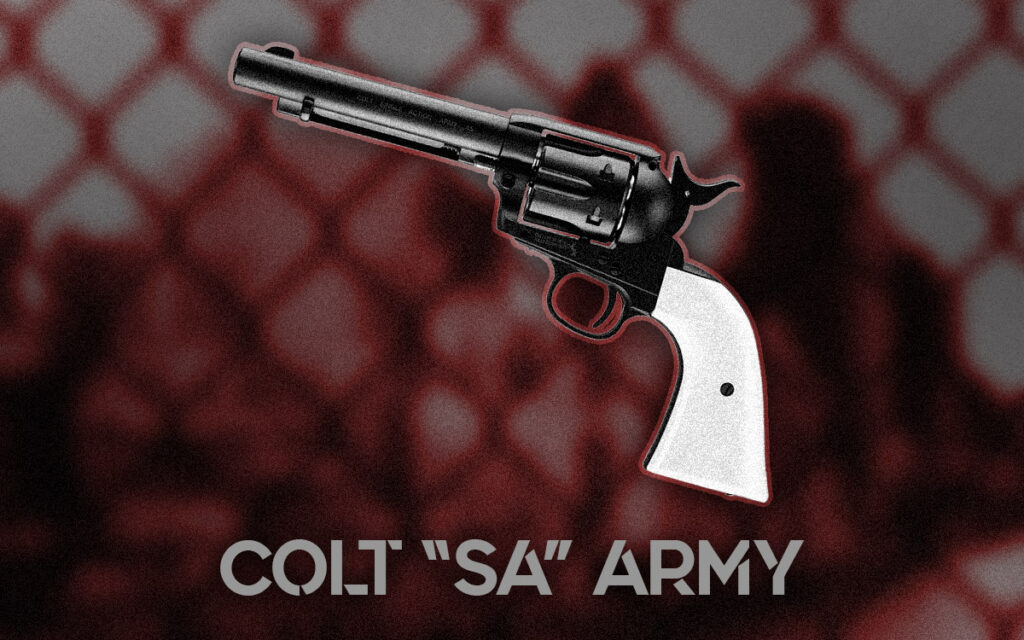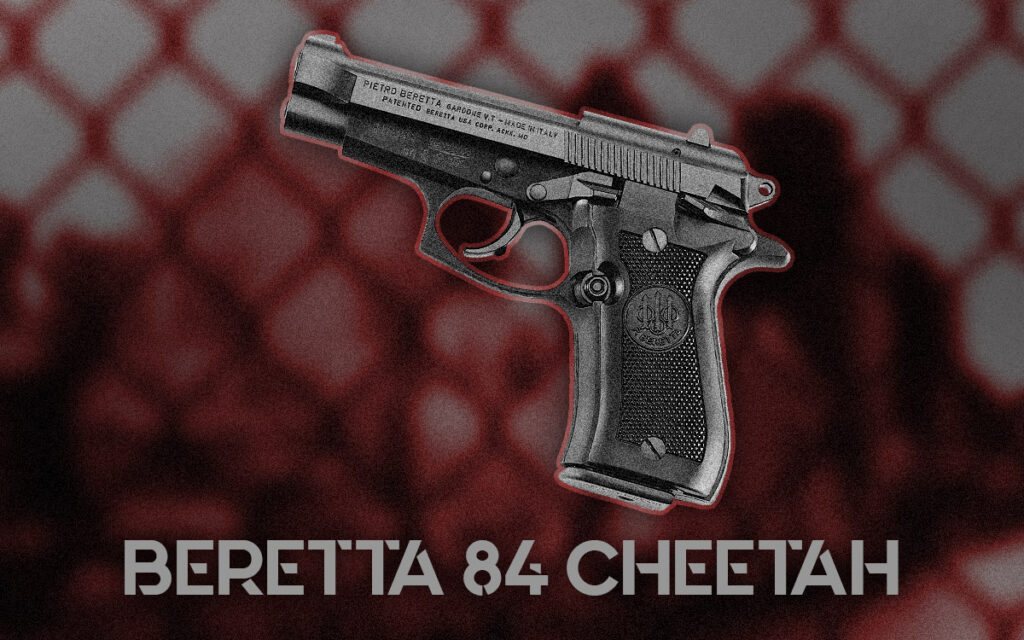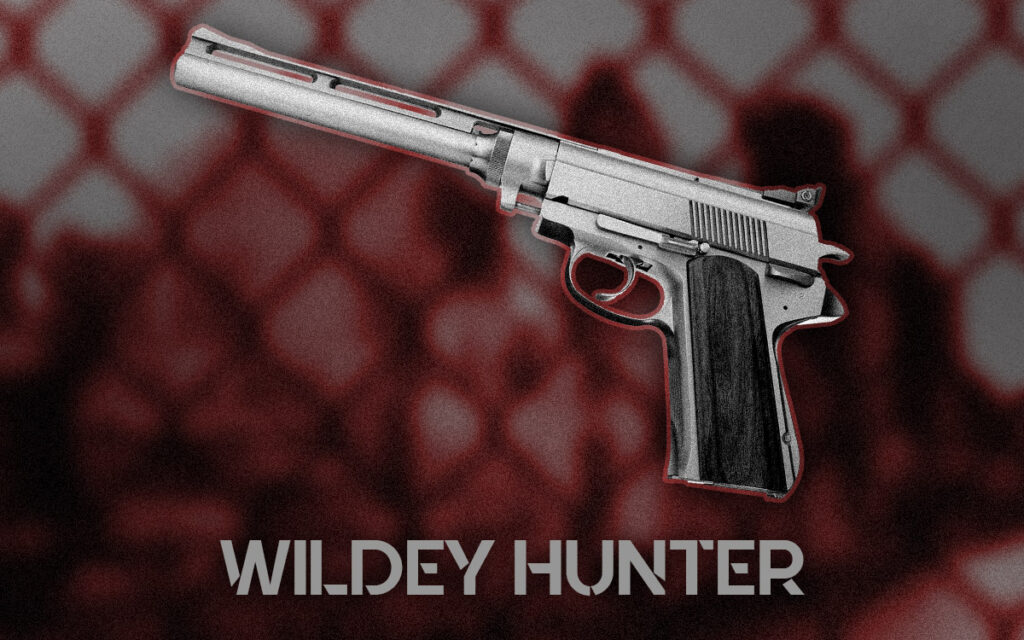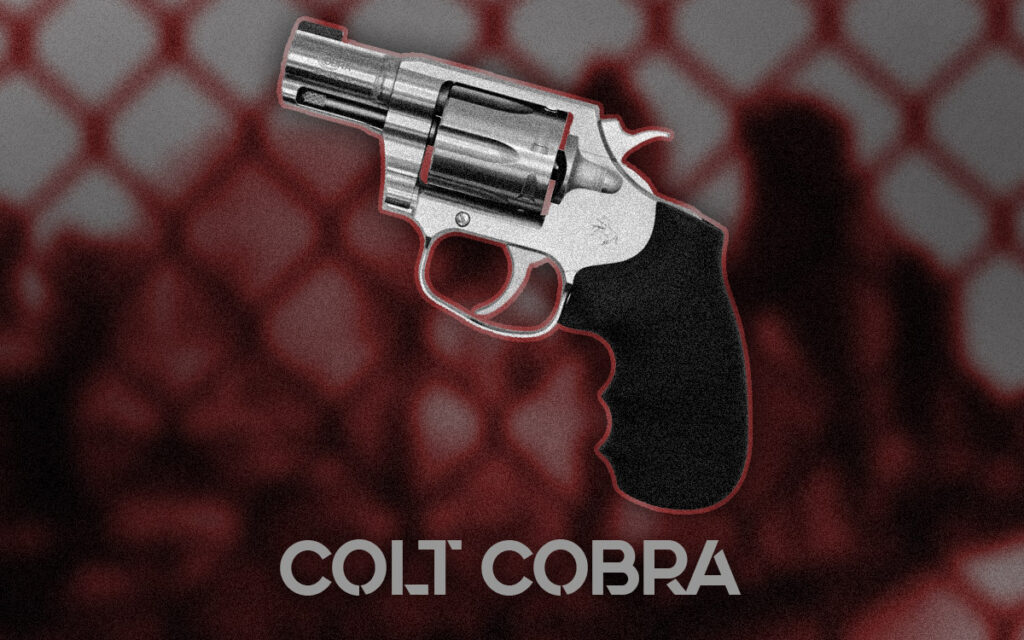

The first three films in the Death Wish series, starring Charles Bronson, generated a significant cultural conversation upon release. These vigilante action films released between 1974-85, pushed cinematic boundaries. They depict Paul Kersey, an architect who becomes a self-appointed public avenger with Death Wish guns after a personal tragedy.
The first film is a gritty, controversial piece. The second and third installments amplify the action and violence, painting a sordid picture of urban decay and lawlessness. Despite its polarizing themes, the series proved popular and bolstered Bronson’s status as an action movie icon.
Death Wish Guns
Death Wish (1974)
The first Death Wish, released in 1974, revolves around the life of Paul Kersey, a successful architect living in New York City. The plot turns dark when three young hoods in a home invasion brutally kill his wife and traumatize his daughter. Instead of relying on the seemingly indifferent police, Kersey takes justice into his own hands and becomes a vigilante.
In the wake of his family’s tragedy, Kersey’s character evolves from a peaceful, law-abiding citizen into a ruthless killer. He stalks the night, baiting muggers and thieves and doling out his version of justice. As he eliminates one criminal after another, he becomes a folk hero in the eyes of the public and a target for the police. The movie explores themes of justice, vengeance, and the morality of taking the law into one’s own hands.
The Guns of Death Wish I
Colt Single Action Army
Kersey visits a client named Ames Jainchill in Tucson, Arizona, where Jainchill invites him to dinner at his gun club. Ames is impressed with Paul’s pistol marksmanship using a Colt Single Action Army revolver at the target range, which Jainchill claims was the same pistol used by bandit Candy Dan in 1890.
Also known as the Peacemaker, the Single Action Army earned a reputation as the “gun that won the West.” With its 7.5″ barrel and chambered in .45 long Colt, the six-shot revolver’s reliability, accuracy, and craftsmanship made it a favorite among law enforcement and military personnel.
Colt Police Positive
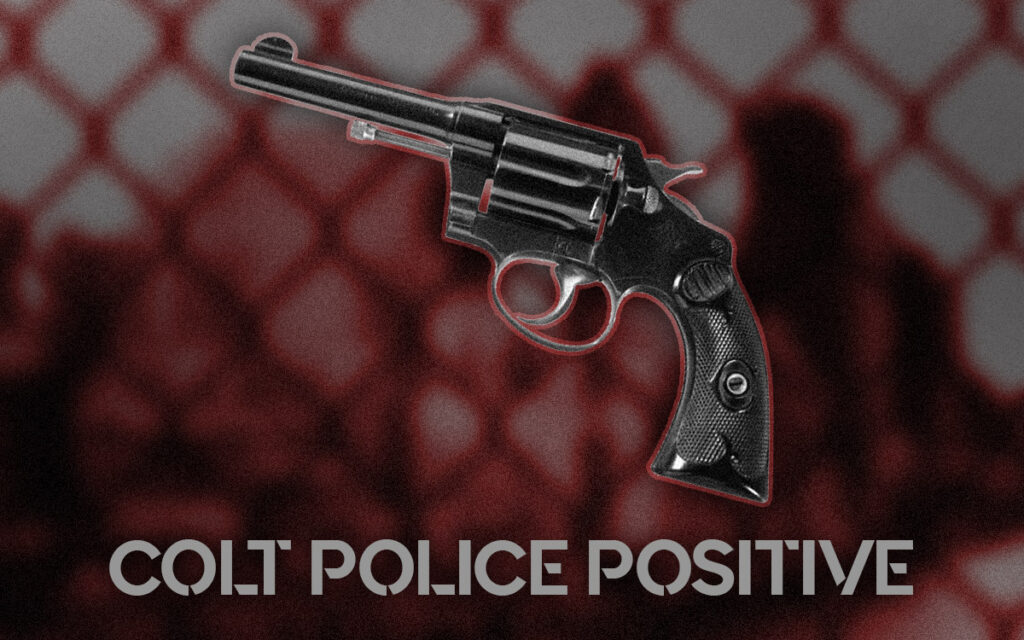
Jainchill drives Paul back to the Tucson Airport and presents him with a gift for his work on the development, placing it into Paul’s checked luggage. Back home in Manhattan, Paul discovers his daughter’s mind has snapped from the trauma of her beating and her mother’s death. Paul also learns that Jainchill’s gift is a Colt Police Positive.
Kersey uses the revolver throughout his vigilante encounters. The Colt Police Positive is a small-frame, double-action revolver likely chambered in the .32-20 Winchester Center Fire. Introduced by the Colt Manufacturing Company in 1907, it marks a significant evolution in firearms design. It incorporates a ‘Positive Lock’ safety that prevents the firing pin from hitting the primer unless the shooter deliberately pulls the trigger.
Death Wish II (1982)
Death Wish II continues the story of Paul Kersey, a New York architect turned vigilante. After the murder of his wife and the sexual assault of his daughter in the first film, Kersey moves to Los Angeles. Here, he hopes to start fresh and leave his painful past behind. However, fate has other plans when a group of criminals disrupts his peaceful life by breaking into his house, assaulting his housekeeper, and kidnapping his daughter.
When his daughter dies while trying to escape from her captors, Kersey again takes the law into his own hands. Using his skills as a one-person army, he embarks on a mission of vengeance, tracking each gang member individually in his quest for justice.
The Vigilante’s Weapon of Choice
Beretta 84 Cheetah
Paul Kersey uses the Beretta 84 Cheetah. This compact firearm is manufactured by the Italian gun maker Beretta in the second Death Wish film. Famous for its ergonomic design and reliability, the Cheetah is popular among gun enthusiasts and law enforcement personnel. It uses .380 ACP, a compact, manageable cartridge that enhances the firearm’s appeal for concealed carry and personal defense. It features a double-stack magazine, seen in the movie, that holds up to 13 rounds, a significant capacity for a gun of its size.
The 84 Cheetah’s design is all about user comfort and safety. It has a frame-mounted, ambidextrous safety that acts as a decocking lever, allowing ‘cocked and locked’ carry. The firearm includes a three-dot sight system for quick target acquisition and checkered grips for a secure hold. The Beretta 84 Cheetah balances firepower and compactness, allowing Kersey to have a dependable, easy-to-carry handgun.
Death Wish III (1985)
The story of Paul Kersey, architect turned vigilante, continues in the third installment of the Death Wish action film. Following the death of his friend, a victim of rampant gang violence, Kersey returns to New York City to wage a one-person war against these gangs. The police unofficially tolerate his actions as an adjunct to their crime-controlling efforts.
In the movie’s second half, Kersey’s fight against crime evolves into a neighborhood-wide battle. His actions inspire other citizens to take up arms against the gangs, leading to a dramatic and thrilling final confrontation. Although showcasing violent scenes, the film also touches on the theme of citizen participation in maintaining law and order in their neighborhood, sparking an intense debate on vigilantism.
The Guns of Death Wish III
Wildey Hunter
Kersey orders and receives a Wildey Hunter, his primary weapon during Death Wish III. The pistol is a distinctive semi-automatic chambered in .475 Wildey Magnum with an 8″ barrel. Designed for hunting and precision shooting, the gun is known for its significant role in cinema and unique design. It boasts a gas-operated system with an adjustable gas piston, allowing shooters to regulate the recoil to match the load. Its stainless steel construction and unmistakable silhouette have made it a favorite among firearm enthusiasts and collectors.
Colt Cobra
Paul Kersey also carries a Colt Cobra throughout the movie. It’s a classic example of American firearm craftsmanship, with its small frame and short barrel, making it an ideal choice for concealed carry. Introduced in the mid-20th century by Colt’s Manufacturing Company, the Cobra is a double-action, 6-shot .38 Special revolver that quickly gained popularity for its reliability and ease of use. Appearing in many other Hollywood films, the Cobra’s lightweight, compact design and its potent stopping power made it a law enforcement and personal defense enthusiast favorite.
Browning M1919A4
Kersey and a neighbor use the Browning machine gun to kill some gang members. The M1919A4 is an American-made medium machine gun. The United States military widely employed it during the Second World War and the Korean War. Distinguished by its air-cooled design and weight of approximately 31 pounds, the Browning offered exceptional versatility. Its .30-06 Springfield ammunition was effective over long ranges, making it a potent defensive and offensive warfare tool. Despite being supplanted by more modern designs in the latter half of the 20th century, the M1919A4 left its mark on military history.
Final Wish
The “Death Wish” series is a noteworthy landmark in the action-thriller genre. It’s a gripping narrative that weaves a tale of retribution and justice. Subsequently, the film series (five, in total) carved a niche in the annals of cinema while cementing Charles Bronson as an action hero. Despite their somber tone, these movies explore the human spirit’s resilience and the lengths an ordinary man will go to protect his loved ones.


